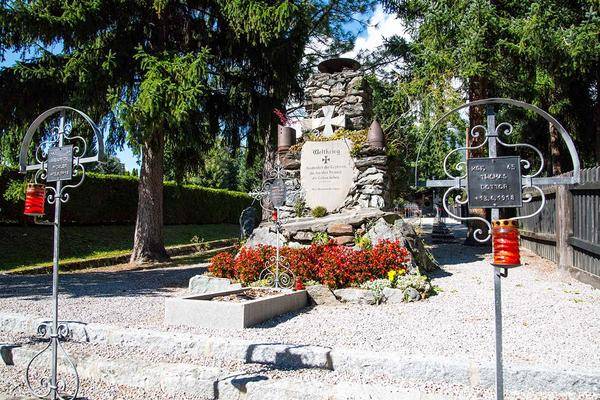Das Friedhofs- und Bestattungswesen ist als gesellschaftspolitisches Element elementarer Teil der städtischen Geschichte: Der ursprüngliche Friedhof befand sich gleich neben dem alten Bürgerspital, und zwar im heutigen Hof westlich der Spitalskirche. Erst mit dem Bau der Pustertalbahn 1870/71 und dem damit gestiegenen Bedarf an medizinischer Versorgung wurden nicht nur das Spital auf Kosten der kaiserlich-königlich privilegierten Südbahn-Gesellschaft adaptiert, sondern auch der dortige Friedhof aufgelassen. Fortan bestattete man rund um die Stadtpfarrkirche St. Andrä – dieser alte Friedhof verwahrloste nach Errichtung des neuen, 1901 eingeweihten weiter nördlich, immer mehr und wurde schlussendlich erst mit Errichtung des Bezirkskriegerdenkmals 1925 beseitigt.
Die heute bekannten städtischen Friedhöfe gehen auf das Jahr 1901 zurück - am 28. Juli 1901 wurde nördlich der Pfarrkirche St. Andrä auf einer Gesamtfläche von 10.374 m 2 ein städtischer Friedhof für 1.858 Erdgräber, 146 Wandgräber und 30 Arkaden errichtet. Im Zuge des Zugsunglücks in Nikolsdorf 1942 wurde westlich des Kriegerfriedhofes ein weiteres Gräberfeld erschlossen, der sogenannte Neue Friedhof. Er umfasst eine Gesamtfläche von 10.700 m 2 , auf dem 1.272 Erdgräber angelegt sind.
Dem Trend der Zeit folgend wurden in den letzten Jahren vermehrt Urnennischen und Urnengräber errichtet. 2013 entstand der „Garten der Ruhe“, in dem 150 Urnennischen untergebracht sind. Pro Jahr finden durchschnittlich ca. 120 Bestattungen statt, beide Friedhöfe sind als „Grünfriedhof“ ausgewiesen.








